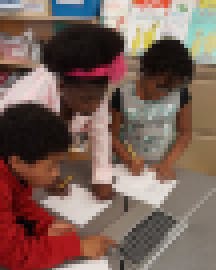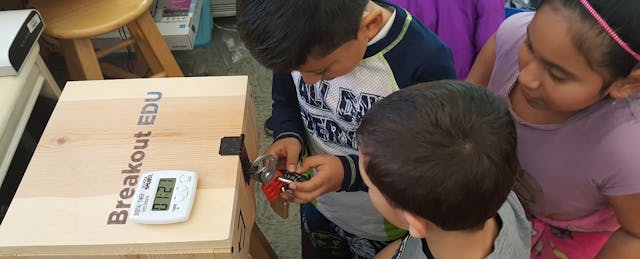I was on my way to my new gig as an elementary teacher one morning when I first heard the term “PBL paralysis” on a podcast. Erin Murphy and Ross Cooper, authors of Hacking Project Based Learning, were using the term to describe the hesitance that teachers feel when jumping into Project Based Learning (PBL), a hands-on model which encourages students to learn through doing. Their advice? Start with a small project and go from there.
I decided to take their advice, beginning with a simple project for my 3rd graders around designing balloon-powered cars. But what started out as promising quickly went south. Balloons weren’t inflating, cars weren’t making moves. While I observed my students, I realized the main reason they were struggling was that they simply weren’t working together as team. There was no collaboration and there certainly was no effective communication. In some groups, students were downright mean to each other.
Frustrated at their lack of progress and their inability to work together, I reached out to Ross. But I did not want to hear about being patient with their “productive struggle” or that I have to embrace “failing forward.” I am all about growth mindset and grit but I felt like something else was at play.
We came to a conclusion: My kids needed to be explicitly taught how to work collaboratively. As teachers, we often put students in groups and expect that they’ll know how to work well together. But think back to the days when you had a group project. It didn’t matter if it was middle school or graduate school or professional development—the dynamics were likely the same. One person stands out as the leader, one (at least) as the slacker, while another sits back quietly with plenty to offer but overpowered by the others. And there is inevitably the group member that usually doesn’t have anything productive to add but will argue about anything and everything.

This group dynamic was pretty much what I saw with my students during the two days they worked on the balloon-powered car task. So at Ross’s suggestion, the next day, we sat as a group and charted out what working as a team should look and sound like. The kids were honest about their shortcomings and what they brought to the proverbial table during the PBL experience.
So how to fix the problem? This is where Breakout EDU comes in. Breakout EDU is an immersive learning game platform where players use teamwork and critical thinking to solve a series of challenging puzzles in order to open a locked box. I had heard about Breakout EDU back in 2015 when it first hit the EdCamp scene in New Jersey. I loved the idea of a team of people working together to uncover clues and solve puzzles to meet a common goal of unlocking the box to win a prize. I bought a Breakout box and had it ready to go but never used it. PBJ paralysis perhaps?
Read Across America Day presented the perfect time to try it a shot. My class was celebrating with lots of Dr. Seuss-themed activities so I chose The Cat in the Hat Lost His Hat as the puzzle my students had to solve. In order to find the clues and figure out the combinations to the various locks, my students simply had to work together as team.
Before starting the timer, we reviewed the charts we had crafted after the PBL debacle as a reminder of how one must collaborate and communicate effectively in order to reach a common goal. While solving the puzzles and playing the Breakout EDU games are fun, the most important piece is taking time before and after to reflect upon the process.
45 minutes later, my kids did not break out—but they did work surprisingly well together. More importantly, we gathered on the carpet and talked about what worked, what didn’t work, and what they would do differently in the future. Once again I was surprised by their honesty and how seriously they took the reflection process. One student stated poignantly, “We didn’t break out this time but we became closer - like a family.” Another announced, “If we worked together like we did today maybe we could have gotten our balloon cars to actually work.”

Since then my students have had many more experiences where they had to collaborate in order to complete a task: building different types of circuits, creating coding playgrounds for Ozobots, and other Breakout EDU games. Where there was once frustrating chaos now there was structured collaboration.
I would be remiss if I did not thank Erin Murphy who suggested the balloon powered cars as a starting point, Ross Cooper for talking me off the ledge when I was ready to give up, and James Sanders and Mark Hammons for creating Breakout EDU, one of the best ways to build community in a classroom. It truly does take a village to raise a child or in this case, my 3rd graders!


